Cwmllynfell is a former mining village, situated about two miles east of Brynamman, and half a mile south of the border with Breconshire, in the Llynfell valley, near to the intersection of the counties of Carmarthenshire, Glamorganshire and Breconshire. By the outbreak of the Great War the village was a thriving community, with ironstone being mined and processed and several thriving coal mines, including the Cwmllynfell Colliery, providing much needed work. A large number of local men left the village to serve in the armed forces in the Great War and again during World War Two and those who fell are commemorated on a wooden war memorial which was located in the Miners Welfare Hall, but has since been relocated to the Millennium Hall. The list of the fallen of the Great War was published in the 30 August 1919 edition of the local newspaper, Llais Llafur, which also covered the story of a drumhead memorial service, which gathered a crowd of almost 4,000 people.
The Great War, 1914-1918
Brinley Davies, Driver, 82357, Royal Engineers. Brinley was the son of David and Hannah Davies, of Gwilym Road, Cwmllynfell. He was a blacksmiths striker at Cwmllynfell Colliery prior to the war. Brinley enlisted at Cwmllynfell into the Royal Engineers and was posted to France with the 205th Field Company, Royal Engineers, which was attached to the 35th Division. The Division moved to France in late January 1916 and saw its first major action during the Battle of the Somme. The division was identified as suffering from low physical and morale standards, so was pulled from the line until early 1917, when it followed the German Retreat to the Hindenburg Line in March 1917. Later in the year it moved north to Ypres, and fought at the Second Battle of Passchendaele. By the Spring of 1918 the division was back on the Somme, and fought at the First Battle of Bapaume, during the German Offensive, moving back to Ypres during the summer. Brinley took ill during the summer and was evacuated to No 7 Stationary Hospital, Étaples, where he died of peritonitis on 5 August 1918, aged 22. He is buried in grave II. A. 40. in Terlincthun British Cemetery, Wimille, France.
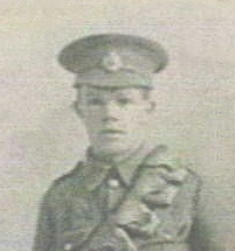
John Protheroe Davies, Private, 58381, Welsh Regiment. John was the son of Thomas and Elizabeth Davies, of Gwilym Road, Cwmllynfell. He was among a number of local men to have enlisted at Cardiff into the 3rd Battalion, South Wales Borderers after being called up on 24 April 1918. John was posted to France on 5 September 1918 and was posted to the 14th Battalion, Welsh Regiment (Swansea Pals), which was by then taking part in the final offensive, attached to 114 Brigade, 48th (Welsh) Division. He joined up with the battalion near Sailly-Saillisel, to the east of the old Somme battlefields, just as the division had forced the crossing of the Canal du Nord. The division then went into reserve before taking up the offensive again, in front of the village of Gouzeaucourt. During the early hours of 18 September 1918, 114 Brigade launched its assault, tasked with the capture of African and Heather Trenches (the Green Line), and then to press on and take the trenches south-west of Gouzeaucourt. John was one of many men killed during the days fighting. The 19-year-old has no known grave and is commemorated on panel 7 of the Vis-en-Artois Memorial, Haucourt, France.
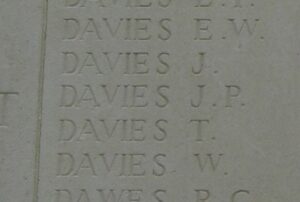
Thomas Davies, Private, 88592, Royal Welsh Fusiliers. Thomas was born in Cwmllynfell in 1893. By 1911 he had been orphaned and was living with his adopted parents, Joseph and Eleanor Jones, at Maesyderi, Glanamman. Thomas enlisted at Carmarthen into the army and late in 1918 was posted to France, joining the 16th Battalion, Royal Welsh Fusiliers, who were attached to 113 Brigade, 38th (Welsh) Division. The Division had been in France since December 1915 and had famously captured Mametz Wood in 1916 and Pilckem Ridge in 1917. The division played a major part in the great offensive across the Somme battlefields from 21 August 1918 onwards, and drove the Germans back to and beyond the Hindenburg Line. Thomas was killed in action during the Battle of the Sambre, on 4 November 1918, aged 25. He is buried in grave C.36. at Englefontaine British Cemetery, France. Thomas is not listed on the Cwmllynfell list, but is commemorated at Cwmaman.
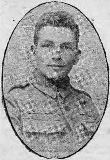
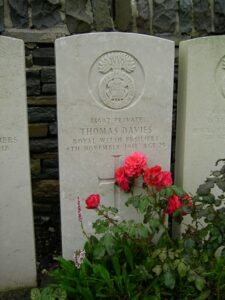
William Richard Evans, Sapper, 92570, Royal Engineers. William was the son of Richard and Sarah Evans, of Tanygraig House, Felinfach. He worked at the Black Mountain Silica Works prior to the war and enlisted at Ystalyfera into the Royal Engineers. He embarked for France with the 38th (Welsh) Division on 3 December 1918. At some time afterwards, William was transferred to the 228th Field Company, Royal Engineers, which was attached to the 41st Division. A year later, on 1 December 1916, while William was in France, his father Richard was injured by a roof fall at the Cwmllynfell Colliery, and died in Swansea Hospital on 21 December 1916. Williams division took part in the Somme offensive before moving to Ypres early in 1917 and took part in the Passchendaele offensive, before being despatched to Italy. It was hurried back to the Western Front in early March 1918 and faced the German Spring Offensive of 21 March 1918. The division saw much fighting before being withdrawn, and sent north to Flanders. William returned home on sick leave during this time and had not long returned to the front when he was killed, on 24 July 1918, aged 26. He is buried in grave XXVIII. G. 14. in Lijssenthoek Military Cemetery, Belgium. William is not listed on the Cwmllynfell list.
Thomas Griffiths, Private, 58287, Welsh Regiment. Thomas was born in Llandovery in 1896, the son of Gwilym and Elizabeth Griffiths. By 1901 the family had moved to Railway View, Cwmllynfell. Thomas worked as a colliery hauler before being called up and enlisted at Cardiff into the 3rd Battalion, South Wales Borderers on 24 April 1918. He was posted to France on 31 August 1918 to join the 5th Battalion, South Wales Borderers, but was instead posted to the 13th Battalion, Welsh Regiment (2nd Rhondda), which was by then taking part in the final offensive, attached to 114 Brigade, 48th (Welsh) Division. He joined up with the battalion near Sailly-Saillisel, to the east of the old Somme battlefields, just as the division had forced the crossing of the Canal du Nord. The division then went into reserve before taking up the offensive again, in front of the village of Gouzeaucourt. During the early hours of 18 September 1918, 114 Brigade launched its assault, tasked with the capture of African and Heather Trenches (the Green Line), and then to press on and take the trenches south-west of Gouzeaucourt. Thomas was one of many men killed during the days fighting. The 22-year-old has no known grave and is commemorated on panel 7 of the Vis-en-Artois Memorial, Haucourt, France.
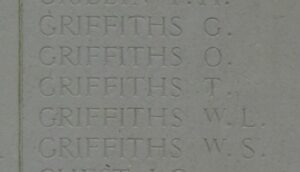
James William Harries, Private, US Army. James was born on 23 September 1890, the son of William and Ann Harries, of Glencoe House Cwmllynfell. He had migrated to America prior to the war, and lived at King County, Washington. He enlisted into the US Army and was posted to France with the 18th Engineer Regiment of the American Expeditionary Force. James became ill and died of Lobar Pneumonia whilst serving in France. He was originally buried in the US Cemetery in Merignac in the Gironde but after the war his grave was exhumed and his body was sent to Southampton on the ship Seamew, arriving there on 24 Jan 21. Nothing more is presently known of him. His brother David also served in the British army and was home on leave in February 1916.
William Morris Hughes, Private, 44185, Royal Welsh Fusiliers. William was the son of William Henry Hughes and Margaret Hughes, of Derhyn, Clwtybont, Ebenezer, Caernarfonshire. He lived at Cwmllynfell prior to the war, and worked there as a collier. He enlisted in the village into the Royal Welsh Fusiliers on 11 December 1915 and was posted to France, landing in Rouen on 17 June 1917, before being posted to the 2nd Battalion, Royal Welsh Fusiliers. The battalion was by then at Ypres, attached to 19 Brigade, 33rd Division, and was preparing to take part in the forthcoming offensive at Ypres. The battalion spent the first two weeks of September in pleasant billets near St. Omer and on 15 September 1917 began marching towards the battle area and by the 21st had been placed in XI Corps reserve, relieving the 23rd Division between the Menin Road and Black Watch Corner on the 24th. On the following day the Germans counter-attacked, but were held back and during the night of 25-26 September 1917 the 2nd RWF moved forwards through the devastated landscape and received their orders to attack at noon on the following day. When the battalion advanced on 26 September 1917 the men immediately came under heavy fire and many casualties were suffered. William was among the many dead suffered by the battalion during the day. The 25-year-old has no known grave and is commemorated on panels 63-65 of the Tyne Cot Memorial, Belgium. William is not named on the Cwmllynfell list.
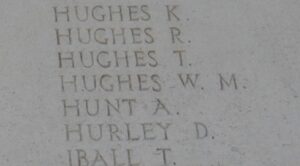
John Llewellyn, Private, 58341, Welsh Regiment. John was the son of Thomas Morgan Llewellyn and Anne Llewellyn, of Carnadwyn, Cwmllynfell. He was called up at the same time as Thomas Griffiths, and enlisted at Cardiff into the 3rd Battalion, South Wales Borderers on 24 April 1918. He was posted to France on 31 August 1918 to join the 5th Battalion, South Wales Borderers, but was instead posted to the 13th Battalion, Welsh Regiment (2nd Rhondda), which was by then taking part in the final offensive, attached to 114 Brigade, 48th (Welsh) Division. He joined up with the battalion near Sailly-Saillisel, to the east of the old Somme battlefields, just as the division had forced the crossing of the Canal du Nord. The division then went into reserve before taking up the offensive again, in front of the village of Gouzeaucourt, which was captured over two days of heavy fighting on 18-19 September. The division was in reserve during the breaking of the Hindenburg Line, and at the beginning of October moved back into the front line to take up the offensive, west of Villers-Outreaux. During the night of 7 October 114 Brigade moved into position ready to assault Mortho Wood the following morning. Just after 07.00 on 8 October 1918 the attack was launched, and started well, but 115 Brigade had taken the wrong line, holding up 113 Brigade and leaving 114 Brigade to take the brunt of the German fire. John was killed in action at some time during the day. The 21-year-old has no known grave and is commemorated on panel 7 of the Vis-en-Artois Memorial, Haucourt, France.
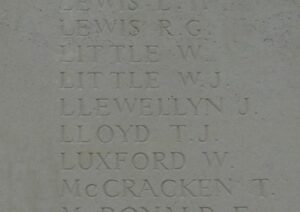
Harry Morgan, Private, 5287, Honourable Artillery Company. Harry was the son of John and Cassie Morgan, of the Post Office, Cwmllynfell. He was educated at Ystalyfera County School and at Cardiff University prior to enlisting at Armoury House, London on 17 November 1915 into the Honourable Artillery Company and was posted to France, landing at Le Havre on 21 July 1916 to join the 1st Battalion, Honourable Artillery Company. The battalion had just been attached to 190 Brigade, 63rd (Royal Naval) Division and was in the Somme sector after moving from Egypt, following service in Gallipoli. The division did not fight in the early part of the Somme offensive, but in the latter months took part in heavy fighting along the Ancre Valley. John was attached to C Company of the battalion when he was killed in action by a shell whilst fighting on the Ancre on 1 November 1916. He is buried in grave III.D.18. in Mesnil Communal Cemetery Extension, France. Harry became the first man from Cwmllynfell to fall during the Great War. Two years earlier, his brother Bertie had been killed in an accident at Cwmllynfell Colliery.
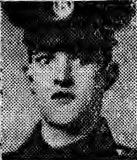
Walter Morgan, Guardsman, 2706, Welsh Guards. Walter was the son of Watkin and Gwenllian Morgan, of Gwilym Road, Cwmllynfell. He worked as a collier prior to enlisting at Cwmllynfell into the Welsh Guards, and was posted to France at some time in 1916, joining the 1st Battalion, Welsh Guards, which was attached to the 3rd Guards Brigade, Guards Division. He probably joined up with the battalion in time to take part in the Somme offensive, where the Guards Division took part in heavy fighting at the Battle of Flers-Courcelette, and then at the Battle of Morval, where the division captured Lesboeufs Village. It remained here for the winter, and in March 1917 took part in the advance caused by the German Retreat to the Hindenburg Line. Later that year the division moved north to Ypres, in readiness to take part in the forthcoming assault on Pilckem Ridge. On 15 July 1917 the Welsh Guards moved into the line on the Canal Bank to begin another tour of duty. On the following day, 16 July 1917, Walter was wounded by shellfire from a British artillery barrage which fell onto his position. He was evacuated to No 3 Casualty Clearing Station where he died of his wounds later that day, aged 36. Walter is buried in grave XVI. F. 11A. in Lijssenthoek Military Cemetery, Belgium.
William Morris, Corporal, 20749, Welsh Regiment. William was born at Rhosamman, the son of Jonah and Margaret Morris. By 1911 he was living at Gwilym Road, Cwmllynfell with his wife Sarah Anne Morris and their two young girls. He then worked as a Cobbler at Pontarddulais prior to the war. He enlisted at Ammanford into the 15th Battalion, Welsh Regiment, which was known as the Carmarthen Pals, and was attached to 114 Brigade, 38th (Welsh) Division. The Division crossed to France in December 1915, and moved to Fleurbaix for trench initiation. In June 1916 the Welsh marched to the Somme, and took part in the attack on Mametz Wood. After capturing Mametz Wood, the Welsh Division was posted to positions north of Ypres, at Boesinghe, where it was to remain for the coming twelve months. William was wounded at Boesinghe, and died of his wounds on 27 February 1917, aged 28. He is buried in grave II.B.5. in Mendinghem Military Cemetery, Belgium.
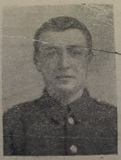
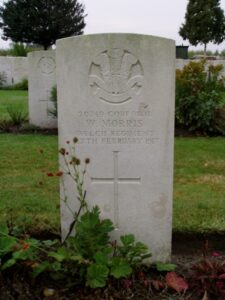
Thomas Henry Pitman, Corporal, 57583, Royal Garrison Artillery. Thomas was born at Fishguard in 1895, the son of Henry and Winifred Pitman. The family had moved to Dorset House, Cwmllynfell by 1901. Thomas became a policeman and served with the Brecon Constabulary at Brecon and then Builth Wells. Following the outbreak of war, he enlisted at Brecon into the Royal Garrison Artillery, and was posted to the 5th/6th Trench Mortar Battery. Not much is known of Thomas’ service on the Western Front, but he was killed in action by shrapnel from a German shell on 9 May 1918, aged 23. He was originally buried in Blaireville Orchard British Cemetery, but after the war the graves within the cemetery were exhumed, and Thomas was re-interred in grave VIII. Q. 27. in Cabaret-Rouge British Cemetery, Souchez, France. His father was a Royal Naval Reservist who was also on active service.
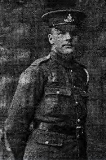
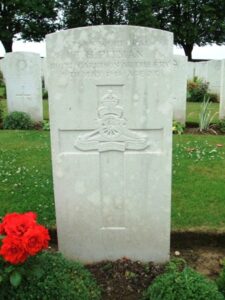
Herbert Sydney Postings, Private, 320305, Welsh Regiment. Herbert, known as Hubert, was born at Callow, Herefordshire on 6 June 1891. He worked for the Great Western Railway at Hereford prior to moving to Cwmllynfell, where he began work as a coalminer at Cwmllynfell Colliery. Hubert enlisted at Carmarthen into the Pembroke Yeomanry in November 1914 and trained with the regiment in Norfolk, where it had been posted on coastal defence duties. During March 1916 the 1/1st Pembroke Yeomanry moved to Egypt, where it merged with the Welsh Border Mounted Brigade and formed the 4th Dismounted Brigade. On 2 February 1917 it merged with the 1/1st Glamorgan Yeomanry to form the 24th Battalion, Welsh Regiment, and became attached to 231 Brigade, 74th (Yeomanry) Division. The Division had formed in Egypt in January 1917 and had fought through the Palestinian Campaign, at the Battles of Gaza and the Battle and capture of Jerusalem. Due to the terrible casualties suffered by the British on the Western Front in March and April 1918 the Division was recalled to the Western Front, and arrived at Marseilles during May 1918. Hubert came home to Cwmllynfell on leave in the first week of September 1918, before re-joining the 24th Welsh in France and took part in their assault on Guillemont Farm, during the Battle of Épehy on 18 September, as part of the offensive towards the Hindenburg Line. The division was moved back north following the battle, in order to take part in the final advance in Artois. Hubert took ill soon after the move and died of pneumonia on 10 October 1918, aged 26. He is buried in grave X.E.9. in Lapugnoy Military Cemetery, France.
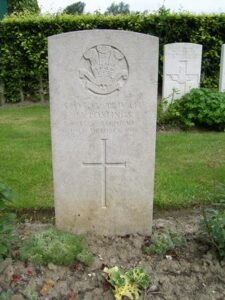
John Thomas, Private, 202821, Welsh Regiment. John was born near Llangadog, the son of John and Jane Thomas. The family had moved to Ystradowen, Cwmllynfell prior to 1911. John worked at the Cwmllynfell Colliery prior to enlisting at Carmarthen into the 4th Battalion, Welsh Regiment, which was the local Territorial infantry battalion, and was attached to 159 Brigade, 53rd (Welsh) Division. The Division had fought through a hard campaign in Gallipoli from August, 1915 until they were evacuated, and then fought in the Palestinian theatre, where they helped in the capture of Jerusalem. John had taken ill sometime during the campaign, and had arrived back in England for treatment, but sadly died in hospital at Reading on 28 December 1917, aged 36. He is buried in Cwmllynfell Welsh Congregational Chapelyard.
Johnny Williams, Private, 58489, South Wales Borderers. Johnny was the son of Daniel and Mary Williams, of Brythonfa, Gwilym Road, Cwmllynfell. He married Mary Hannah Rees, of Cefn-Coed View, Upper Cwmtwrch, early in 1918 prior to enlisting at Cardiff into the 3rd Battalion, South Wales Borderers after being called up. He was posted to France soon afterwards, joining the 5th Battalion, South Wales Borderers, which was attached to 58 Brigade, 19th (Western) Division. He probably joined the battalion following its ordeals following the German offensives of 21 March 1918, on the Somme, and 9 April 1918, on the Lys, when the 19th Division was unfortunate to have been caught up in two separate battles. The battered division moved to the Aisne sector to rebuild after being evacuated from the Messines area from 14 May, but got caught up in the Germans third, and final, large scale offensive of 1918, when they attacked the British and French lines in the Aisne and Champagne sectors. The division suffered terribly again and did not see further action until taking part in the 100 days offensive, which was launched on 21 August 1918. Johnny was killed in action during the advance past Cambrai on 15 October 1918. The 22-year-old has no known grave, and is commemorated on panel 6 of the Vis-en-Artois Memorial, Haucourt, France.
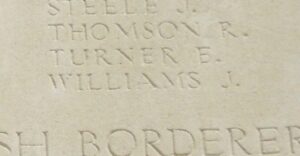
Morgan Charles Williams, Private, 41368, South Wales Borderers. Morgan was the son of Morgan and Edith Williams, of Irvonia, Ystradowen Road, Cwmllynfell. He enlisted at Carmarthen into the South Wales Borderers, and was posted to France to join the 2nd Battalion, South Wales Borderers, which was attached to 87 Brigade, 29th Division. The division had moved to the Western Front on 15 March 1916 following service in Gallipoli. It took part in its first major action in France during the 1916 Somme Offensive, and fought at the Battles of Albert and Le Transloy, suffering heavy casualties. In the Spring of 1917 it fought at the Battle of the Scarpe, which was part of the Arras Offensive, and then moved further north to Ypres. Here it fought at the Battle of Langemarck, and then at the Battles of the Menin Road, Polygon Wood, Broodseinde and Poelcapelle, before moving to Cambrai. It then fought at the Battle of Cambrai in November and December 1917 before moving back to Flanders early in 1918. The German Spring Offensive hit the British on the Somme on 21 March 1918, and hit in Flanders just weeks later, on 9 April and the 29th Division became caught up in desperate fighting, being moved from Passchendaele on 10 April to help defend Outtersteene, and at dawn on 11 April 1918 was hit by the Germans. The Borderers fought desperately throughout the day, and became fragmented, fighting in small isolated parties mixed up with other units. Morgan was one of many casualties suffered by the battalion when he was killed in action at some time during the day. The 19-year-old has no known grave and is commemorated on panel 5 of the Ploegsteert Memorial, Belgium.
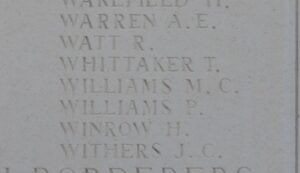
World War Two, 1939-1945
Samuel Arthur Bragg, Sergeant, 1893070, Royal Air Force Volunteer Reserve. Samuel was the son of Ernest Edgar and Mabel Bragg, of Padstow, Cornwall. He married Violet Mabel Jones, of 1, Brynheulog Terrace, Cwmllynfell, in 1940. Samuel followed in his fathers footsteps and enlisted into the Royal Air Force, and after training as a Wireless Operator was posted to 12 Squadron, Royal Air Force, which was based at RAF Wickenby, in Lincolnshire, equipped with the Avro Lancaster. On 26 February 1945, Samuel took off from Wickenby aboard Lancaster III, Serial PB243, on a training flight. The Lancaster must have suffered a mechanical failure, as it dived into the ground near Stainton-le-Vale, near Market Rasen, Lincolnshire, killing all her crew of six. Samuel, who was 29 years old when he died in the crash, was brought home and he was buried with full military honours in Cwmllynfell (St. Margaret) Churchyard.
David Glyndwr Davies, Chief Stoker, D/KX 79912, Royal Navy. David was born on 11 September 1909, the son of John and Margaretta Davies, of Upper Cwmtwrch. He was already serving with the Royal Navy at the outbreak of war, and was posted aboard the Hunt class destroyer, HMS Dulverton, which had been launched on 1 April 1941. She was completed by September 1941. Dulverton was utilised for convoy escort duties, mainly escorting troop convoys bound for Suez Canal and also in convoys to Malta. In October 1943 Dulverton was involved in the Dodecanese Campaign, as part of a force that was trying to capture the Greek islands of Kos and Leros. On 12 November, she returned to support the garrison on Leros which had just been invaded by the Germans and on the following day, 13 November 1943, whilst five miles off the coast of Kos, she was attacked by German Dornier bombers and was badly damaged by a direct hit on her bridge. Seventy-eight men, including David, were killed in the explosion. Dulverton was later scuttled and sunk. David was 34 years old when he died that day and is commemorated on panel 81 of the Plymouth Naval Memorial, Devon.
Gwilym John Davies, Lance Bombardier, 1556553, Royal Artillery. Gwilym was the son of David and Annie Davies, of Cwmllynfell. He served with 65 Battery, 34 Light Anti-Aircraft Regiment, Royal Artillery, which was a Territorial unit, based in Swansea. Nothing further is known of Gwilym, but he died on 21 April 1941, aged 23, and is buried in Section C, consecrated grave 18001, in Plymouth (Weston Mill) Cemetery, Devon.
Tom Griffiths, Corporal, 1517902, Lincolnshire Regiment. Tom was born in Cwmllynfell in 1919. He served with the 6th Battalion, Lincolnshire Regiment, which was attached to 138 Brigade, 46th Division. The battalion, as part of the 46th Division, took part in the Salerno landings on 9 September 1943, and saw heavy fighting around Magazzea. It took part in the drive through Italy over the coming months, and on 10 September 1944, just over a year after the landings, took part in the offensive against the Gothic Line, ordered to capture Gemmano Ridge. The battalion became caught up in terrible fighting over the coming days, which saw it suffer heavy casualties. Tom was killed in action here on 17 September 1944, age 25. He is buried in grave XVII.C.8. in Coriano Ridge War Cemetery, Italy.
Elvet James, Private, 6102775, The Queen’s Royal Regiment (West Surrey). Elvet was the son of William and Mary James. He married Edith Mary Cavell Williams, of Loughor early in 1942, just prior to embarking for Egypt with the 1/5th Battalion, West Surrey Regiment. The battalion was attached to the 169 Brigade, 56th London Division, and Elvet joined the battalion in time to take part in the Battle of El Alamein. Elvet was killed in action here on 14 November 1942, aged 30, the day after the capture of Tobruk. He has no known grave, and is commemorated on column 54 of the Alamein Memorial, Egypt.
Clifford Johnson, Corporal, 3910476, Royal Armoured Corps. Clifford was the son of George and Jane Johnson, of Cwmllynfell. He served with the 4th/7th Royal Dragoon Guards, which was attached to the Royal Armoured Corps. The regiment was in France with the BEF in 1940 and lost all its equipment prior to being evacuated from Dunkirk. In 1943, the regiment joined the 79th Armoured Division, and equipped with Valentine tanks, but by the summer of 1944 had re-equipped with M4 Sherman DD tanks. The regiment landed on King Green, Gold Beach as part of the 8th Armoured Brigade, at 07.20 on 6 June 1944, supporting the 50th (Northumbrian) Infantry Division. Clifford was killed in Normandy on 15 June 1944, aged 26. He is buried in grave XIV.H.2. in Bayeux War Cemetery, France.
Byron Jones, Private, 3959526, Welch Regiment. Byron was the son of William and Margaretta Jones, of Cwmllynfell. He served with the 2nd Battalion, Welch Regiment, which had been on garrison duty in India when war was declared. Following the Japanese invasion of Malaya, the 2nd Welch were moved to Calcutta to prepare for a move to Rangoon, but the Japanese captured the city before this move could occur and as a result the 2nd Welch did not go into action until October 1944 when the battalion moved into Burma attached to the 19th Division, in the 14th Army. The Welch crossed the Chindwin and at the end of November made contact with the Japanese for the first time. During January 1945 the Welch crossed the Irrawaddy, and began fighting in earnest against the Japanese. Heavy fighting continued over the coming months, and in May 1945 the Welch crossed the Sittang, where the Monsoon struck. After a short but arduous campaign, the battalion suffered its final casualties of the war on 28 July 1945, when a patrol was ambushed by the Japanese and suffered the loss of twenty men killed. Bryon was mong the twenty killed that day. The 32-year-old is buried in collective grave 4.B.6-20 in Rangoon War Cemetery, Myanmar.
Garfield Jones, Lance Sergeant, 2008277, Royal Engineers. Garfield was the son of Hywel and Joan Jones, of Cwmllynfell. He married Mary Rees, of Ystradgynlais, whilst stationed in Aldershot in 1941. He served with the 3rd Parachute Squadron, Royal Engineers. The squadron parachuted into Normandy in the early hours of D-Day, 6 June 1944, in support of the 3rd Parachute Brigade, detailed to carry out various tasks, including the destruction of a number of key bridges. Garfield was among a number of troops who came down outside their target areas and amidst the confusion several were captured by the Germans. Garfield was reported to have been taken prisoner, but killed eight of his captors with their own weapons before escaping. He was killed on the following day, 7 June 1944, aged 28. Garfield is buried in grave IA.H.21. in Ranville War Cemetery, France.
Rees Pritchard Jones, Gunner, 853656, Royal Horse Artillery. Rees was the son of William Thomas Jones and Elizabeth Jones, of Amman Street, Rhosamman, and the nephew of Rees Pritchard Jones, of Cwmllynfell. He served with 4 Regiment, Royal Horse Artillery, which was attached to the famous 7th Armoured Division in North Africa. The early months of 1942 saw the German Afrika Korps, under Erwin Rommel, capture swathes of land in North Africa, including the important port of Tobruk. The 4th Regiment, RHA had been in the desert fighting since the beginning of the campaign, and saw much action during what later became known as the First Battle of El Alamein. Rees was killed in action here on 28 July 1942, aged 24. He is buried in grave XXIX.A.10. in El Alamein War Cemetery, Egypt.
Rhys Walter Powell, Wireman, D/MX 619718, Royal Navy. Rhys was born on 18 January 1924, the son of Griffith Walter and Margaret Powell, of Berrington Hill, Upper Cwmtwrch. He served with the Royal Navy, as a wireman (electrician) at the Combined Operations training base, HMS Dundonald, which was located in Troon, Ayrshire. Following the successful invasion of Normandy from 6 June 1944, the commando training bases began to be run down, and Rhys appears to have been among a number of men posted back aboard various craft. On 18 October 1944 he was aboard LCT 7015, which was sailing from the Clyde past Lands End along with several other Landing Craft, when six of them, LCT 480, LCT 488, LCT 491, LCT 494, LCT 7014 and LCT 7015, foundered and sank in heavy weather, with the loss of 48 lives. Rhys was 20 years old when he died that day and is commemorated on panel 91, column 1 of the Plymouth Naval Memorial, Devon.
Gethin Price, Trooper, 6096913, Reconnaissance Corps. Gethin was the son of Watkin and Margaret Ann Price, of Cwmllynfell. He married Beryl Price, of North Kensington, London, in 1939, soon after the declaration of war. Gethin served with the 2nd Reconnaissance Regiment (6th Battalion, The Loyal North Lancashire Regiment), Royal Armoured Corps, which was attached to the 2nd Division, which was in Burma with the 14th Army. The regiment took part in heavy fighting throughout 1944, and during the early months of 1945. Gethin was killed in Burma on 25 February 1945, aged 29. He has no known grave and is commemorated on face 1 of the Rangoon Memorial, Myanmar.
Glyn Walters, Private, 1811792, Argyll and Sutherland Highlanders. Glyn was the son of John and Mary A. Walters, of Cwmllynfell. He served with the 8th Battalion, Argyll and Sutherland Highlanders, which was a Territorial unit that had been evacuated from Dunkirk in 1940 before being attached to 36 Brigade, 78th Division. The division formed in Scotland especially for Operation Torch, and landed near Algiers on 8 November 1942. The division fought with distinction in the Tunisian campaign before the capitulation of the Afrika Korps and then landed in Sicily in July 1943. It then landed in mainland Italy in September 1943 and took part in the slow drive north, taking part in several engagements, including the Battle for Monte-Cassino. The division returned to North Africa for several months before returning to Italy to take part in the final offensive, and the Battle of the Argenta Gap. Glyn was killed a week into this final battle, on 18 April 1945. The 26-year-old is buried in grave I.B.6. in Argenta Gap War Cemetery, Italy.
Arthur Emlyn Watkins, Sergeant, 1601336, Royal Air Force Volunteer Reserve. Arthur was the son of John E. and Florence M. Watkins, of Cwmllynfell. He served with 115 Squadron, Royal Air Force, which was based at RAF Witchford, equipped with the Avro Lancaster. On the night of 3-4 December 1943 Arthur took off from Witchford aboard Lancaster II, Serial DS765, which had been despatched as part of a force of 527 aircraft to bomb Leipzig. Twenty-four aircraft were lost in the raid, many on the return leg of the journey, on the morning of 4 December 1943. Arthur’s aircraft was among those lost that morning. The 21-year old has no known grave and is commemorated on panel 168 of the Runnymede Memorial, Surrey.
David John Williams, Gunner, 108816, Royal Artillery. David was the son of Thomas and Sarah Williams, of Cwmllynfell and the husband of Mary Williams, of Swansea. He served with 172 Field Regiment, Royal Artillery, which left Britain for North African in January 1943. On 24 February 1943 the battery took part in a famous action at Hunt’s Gap, near Beja, where it was almost wiped out. After rebuilding the battery took part in the invasion of Italy, attached to the 46th Division. David was killed during the landings at Salerno on 9 September 1943, aged 32. He is buried in Salerno War Cemetery, Italy.
Siriol Williams, Flight Sergeant, 366471, Royal Air Force. Siriol was the son of William Thomas Williams and Mary Williams, of Ochrwaun, Cwmllynfell. He married Florence Maud Scarlett while based in Lincolnshire while based there with the Royal Air Force in 1936. By the time war broke out, Siriol was serving as a pilot with 144 Squadron, Royal Air Force, which was based at RAF Hemswell in Lincolnshire, equipped with the Handley Page Hampden medium bomber. The squadron flew its first mission on 26 September 1939, when a dozen aircraft were sent out to hunt German shipping in the North Sea, but no targets were encountered. Three days later, the squadron sent out eleven aircraft over the North Sea on a similar mission, and split into two flights to cover more area. Siriols’ flight, of five aircraft, was intercepted by a patrol of Messerscmitt Bf109 fighters, and all five aircraft were shot down. Siriol was badly burned when his Hampden crash-landed in Germany, and died that same day, on 29 September 1939, aged 29. He is buried in grave 4.E.6. in Sage War Cemetery, Germany. His nephew, Ogwyn, later joined the RAF and was killed in 1942.
William Ogwyn Williams, Pilot Officer, 46839, Royal Air Force. William, known as Ogwyn, was the son of Johnny and Sarah Williams, of Cwmllynfell. He married Elizabeth Evans, of Lower Cwmtwrch, in 1941. He served with the South Wales Borderers before transferring to the Royal Air Force, possibly as a result of the death of his uncle, Siriol Williams, in 1939, and in 1941 was accepted for pilot training. Ogwyn became a pilot with 106 Squadron, Royal Air Force, which was equipped with the Avro Lancaster, based at RAF Coningsby in Lincolnshire. During the night of 15-16 September 1942, Ogwyn took off from Coningsby aboard Lancaster I, Serial R5681, which was part of a force of 369 aircraft ordered to bomb the Krupp works at Essen. During the early hours of 16 September 1942, the Lancaster was brought down over Germany, killing all her crew. Ogwyn was 23 years old when he died that morning and is buried in grave 12.F.2. in Reichswald Forest War Cemetery, Germany.